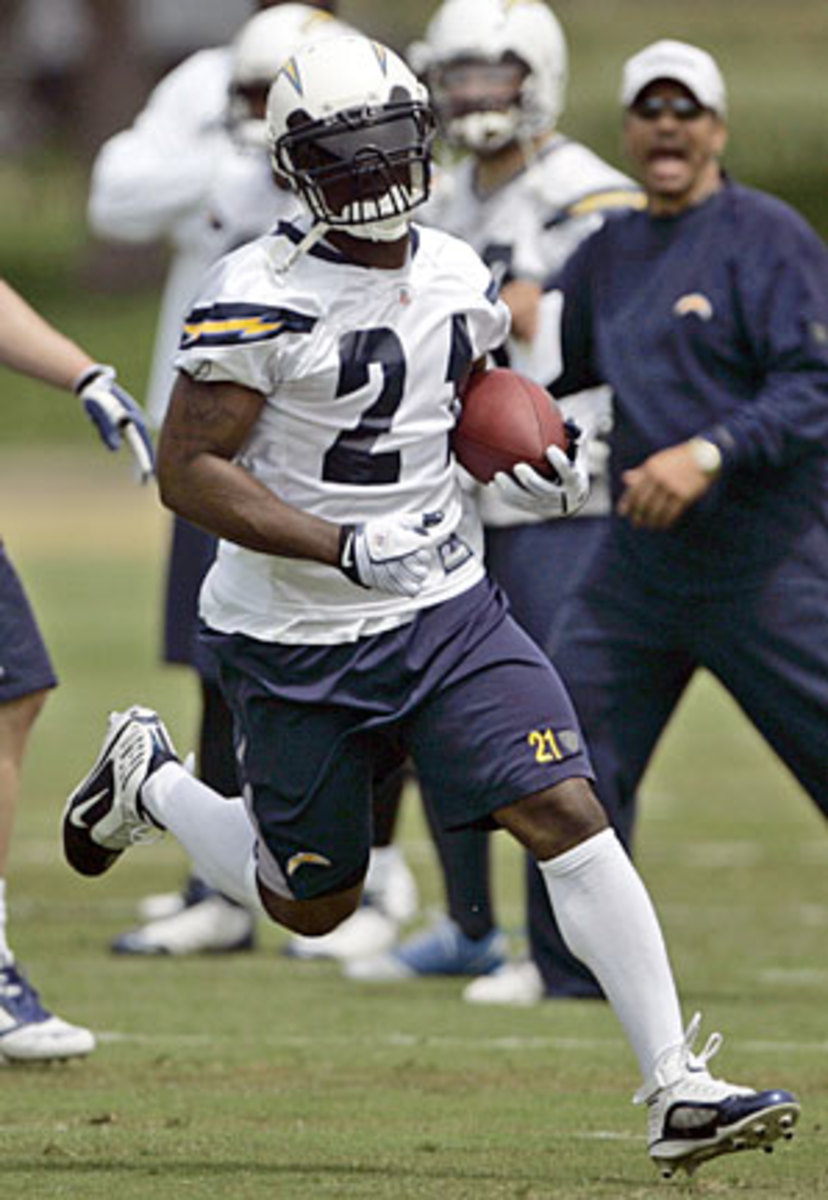How old is too old?
It's that time of year again; the time when the thaw of spring renews life around us. Many sports fans associate the arrival of spring with baseball, but for weary fantasy football editors, it can only mean one thing: the beginning of projections.
Yep. Projections. Here's a little secret from a grizzled veteran of this rite of spring: All fantasy editors hate projections. While every fantasy footballer on the planet looks forward to the latest player projections, we hate them. Any editor who tells you otherwise is either lying or drinking. Or both.
Why do we hate projections? I've given this some thought, and I've boiled it down to two main reasons:
• It's A Lot of Work -- this should be fairly obvious. As an editor, you not only have to come up with your own ratings, you have to act as a referee for your entire staff's ratings. If you think I'm making the process out to be more difficult than it really is, try this experiment: walk into your favorite bar, and ask 20 guys who the hottest chick on the planet is; after you get all their answers, make a list that all 20 guys will agree is accurate. I rest my case.
• The Job Never Ends -- much like the search for competent government or peace in the Middle East, projecting player stats is seemingly endless. Once you think you've covered all the angles and have produced the best possible rankings, something pops into your head that causes you to tweak one or two players ... which leads to a complete re-ranking of the position ... which leads to wondering how those tweaks may effect other positions ... which leads to another three days of work.
Case in point: after all our advances in our projection methodology, I thought we had all of the bases covered. I mean, we accounted for past performance, strength of schedule, consistency, trend evaluations ... what more could there be? Surely, the great minds at Sports Grumblings could do no more, right?
Wrong! A couple of seasons ago, I began to take note of all the bobble-heads on TV talking about players "being at the age when they hit they wall." While all of us can stipulate to the ravages of age on physical performance, I began to wonder if there was any way to actually quantify the effects of age on player performance. In other words, how old is too old for purposes of fantasy football projections? Fortunately for you, Mighty Max, the Sports Grumblings supercomputer, is loaded with all the pertinent data and is raring to go!
I decided to use fantasy performance as a gauge of player performance, and settled on the popular World Championship of Fantasy Football (WCOFF) scoring for the offensive players. The criteria for inclusion:
• The players considered in the sample had to play in at least eight games;
• Each age/position combination had to have at least two players;
• Ages are as of the beginning of every NFL season;
• Performances of players over the past five seasons are being tracked;
Given those conditions, we get the following results for the offensive skill positions:
So what does all this mean? Let's look at the most scrutinized position, running back. We've all heard the adage, "Running backs hit the wall at 30" and "Don't draft any RBs turning 30". We've all heard these words of advice from various fantasy "experts", but are they true? The answer is a resounding NO! While there seems to be a magical age where RB performance nosedives, it is not at 30; very clearly, it is at the age of 33 that running backs, on average, begin to see a steady erosion of their skills. It is all downhill for runners after the age of 33. How downhill? Try this: by the age of 34, a runner cannot be expected to be half as productive as he was just two years earlier.
So when determining the value of runners this season, don't listen to the out-of-touch "experts" who will warn you of the dreaded "RB Wall at 30".
While QBs and TEs are all over the map in terms of spotting a trend, the WRs may be developing a trend for their own "wall" -- which would clearly be at the age of 35.
Moving to the other side of the ball, Mighty Max produced the following numbers:
Interesting! Defensive players don't seem to have a "wall" they run into the way running backs do. The closest IDP position to mimic the runners is linebacker, where we notice that the LBs begin their inevitable slide at the age of 35.
Finally, some of you will ask about the kickers. As always, my answer is: nothing about kickers matters. They are a crapshoot, irrespective of the analysis being done. Think I'm exaggerating? Take a look:
The moral of the story: wait until the last round of your draft, and then grab the most consistent kicker on the highest scoring team available.






































